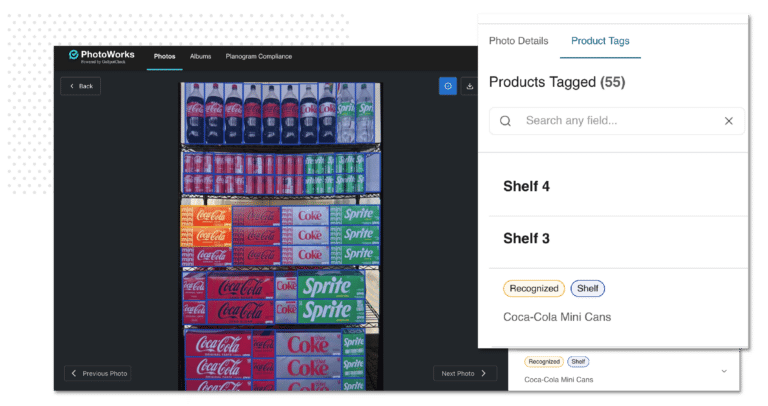As a leader in your manufacturing company, you must comply with regulations and ensure the safety of your workers. However, it’s virtually impossible to make smart decisions without a clear understanding of safety conditions at each factory. To make matters worse, many manufacturing supervisors allow incidents to slip below the radar either due to under-reporting by workers or a desire to hide unsafe practices.
Often, the abundance of paperwork and time lost handling injury claims is enough to convince an already anxious on-site manager to sweep a near-miss or accident under the rug. In other cases, workers fear retribution, like in this 2016 OSHA-sponsored study that noted some workers fail to report injuries because of their employer’s absentee or disciplinary programs.
The truth is that only a small fraction of safety noncompliance is intentional. Most of it occurs in the periphery, encouraged by data blind spots, inadequate training, and managerial negligence. Fortunately, it’s not hard to shine a light on those issues, and it’s possible to change noncompliant behavior with minimal changes to your process. In the following four steps, we’ll discuss easy ways to turn inspections into a tool for reversing those negative trends.
1. Practice good recordkeeping
It all starts with proper documentation: can you read the latest safety inspection? Is the information available, legible, and well-organized? Most importantly, are the right people notified of the results, and are they able to access that data when they need to? If you answered “no” to any of these questions, it’s time to revisit your documentation process.
Make sure your records are standardized and searchable so that it’s easy to both find specific incidents and analyze the aggregated data. If you’re working with paper forms and spreadsheets, consider upgrading your inspections by adopting mobile forms. Bringing your forms into the digital era will make it easier to organize your data, share it with the right people, and draw actionable insights from inspections over time.
Safety inspectors should always examine the on-site records to ensure that they’re available, legible, and in line with other reports. Take the time to update managers on any changes to your inspection standards and documentation best practices. If they aren’t sure what your internal safety standards are, the inspector should recommend additional training and provide reference info.
2. Go above and beyond regulations
Design your safety standards to mimic the sort a regulatory agent would look for, then go one step further. Whatever the regulatory minimum is for your industry, make your standards even more stringent. The goal is to provide a much wider window for error while meeting and exceeding the acceptable minimum.
For example, OSHA guidelines require hearing protection for workers exposed to noise in above 85 decibels. Suppose one of your factories uses machines that generate only 70 decibels based on your internal measurements. You could let workers decide whether they wear hearing PPE, but that could leave you open to liability. The smarter (and safer) choice is to make it an internal standard even though it’s not over the regulatory limit.
Your safety inspectors shouldn’t need to carry around decibel meters, however. Take the time to examine all your machines, processes, and worker behavior, and then set the requirements in stone based on your research. Long before a safety inspector begins their walkthrough, there should be clear signage informing all personnel of the expected PPE in each area, including your above-the-minimum requirements. If there isn’t, it’s time to make corrections.
3. Make on-the-spot corrections
Safety inspections shouldn’t be a drawn-out process. When an inspector discovers an issue at one of your factories, it needs to be fixed right away. Equip them with the authority and tools to make on-the-spot corrections so they can begin working toward a resolution immediately. Start by examining your workflows for any step that takes corrections away from frontline employees and moves them into an approval chain.
Next, you’ll need to determine whether the approval is essential for moving things forward. Then, revise your inspection process to reflect what can and can’t be changed without authorization. For example, if an employee isn’t wearing the proper PPE, it’s easy to tell them to correct their behavior. Rarely does this kind of correction need more than a quick note and a conversation, and it seldom requires approval from anyone besides the on-site manager.
However, if a lack of proper signage causes that behavior, the inspector could instruct the on-site manager to order a sign on the same day that the problem was discovered and make a note in their report that corrective action was taken. Be aware that this change in authority can cause some tension between inspectors and managers. Ultimately, you’ll need to re-frame corrections that aren’t for high-risk or intentional noncompliance as training opportunities.
4. Create training opportunities
Each time an inspector makes a correction or cites an issue, it’s an opportunity to show employees and managers how to do it right. They don’t need to be patronizing, but if standards have changed—or if the infraction displays a gross misunderstanding of the proper procedure—there’s never a time like the present to set things right.
Even if the inspector doesn’t have time to demonstrate everything personally, set up a process in which they can recommend employees for additional training. Not only does this make a big difference in lowering liability, but it also ensures that the employee (or manager) is very unlikely to make the same mistake again.
It’s difficult to draw a line between training and punishment for some workers. They’ll inevitably see the additional training as a way of singling them out, and there is some truth to that. After all, you don’t want to let them continue unsafe behavior. The best course of action is to give everyone at the location (or everyone on the infringing employee’s team) the same training rather than focusing on just one person.
The next steps in making manufacturing safer
Form.com specializes in making data more optimized, accessible, and actionable. Our reports and dashboards create cross-sections of your data and help you draw insights from trending issues. Dashboards can also give you real-time oversight to make better decisions sooner, helping you stay ahead of safety issues before they escalate.
Our individually customized mobile forms can reinforce your existing process with faster inspections, clearer communication, and better connectivity. Stakeholders will know the minute an inspection has been completed, and your company leadership will always have the most up-to-date info at a glance. More importantly, your workers will be safer, your liability will be lower, and your managers will align with company standards.
If you’d like to learn more about how FORM can elevate your manufacturing safety inspections from simple “box-checking” to a tool for continuous improvement, read this white paper.
Want to learn how FORM can improve your manufacturing safety inspections? Get in touch with FORM solutions expert and tell us about your process today.






